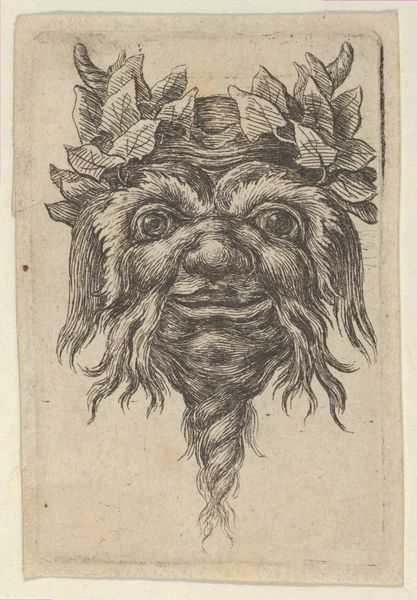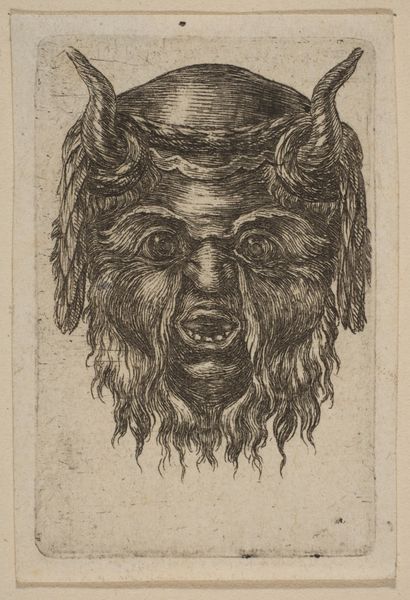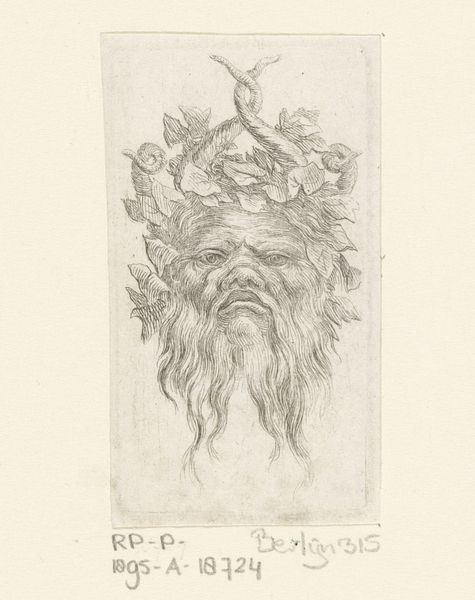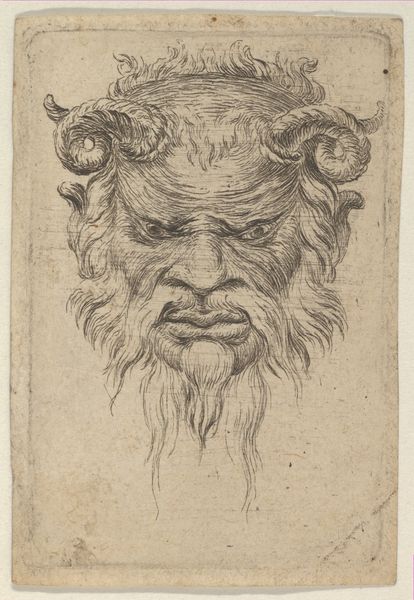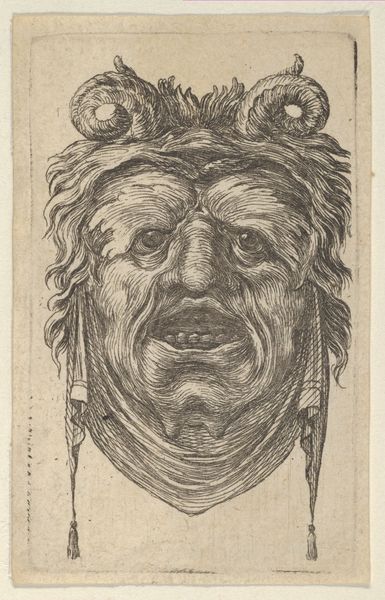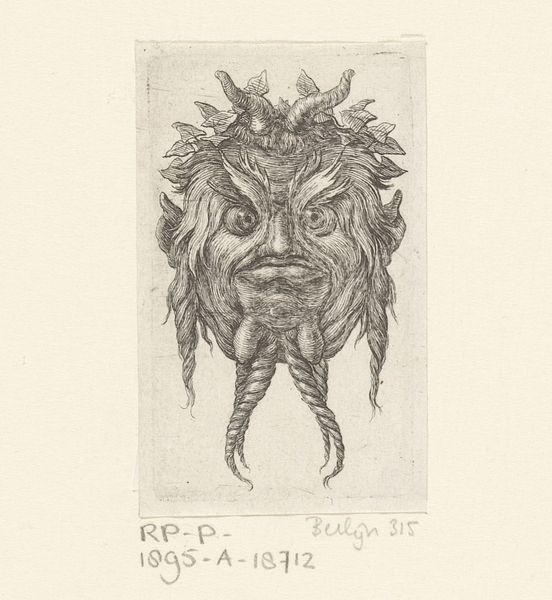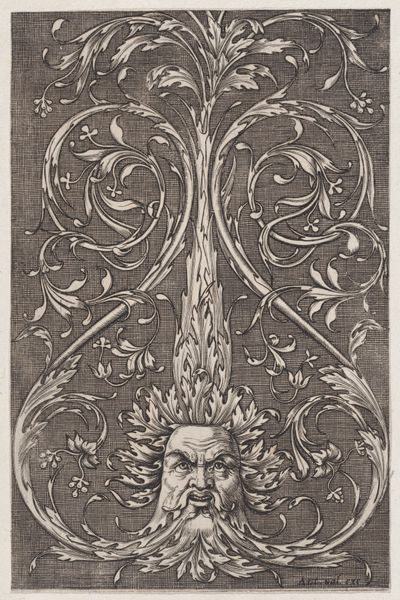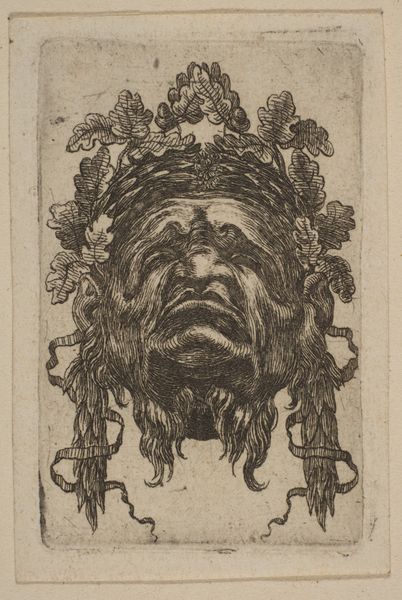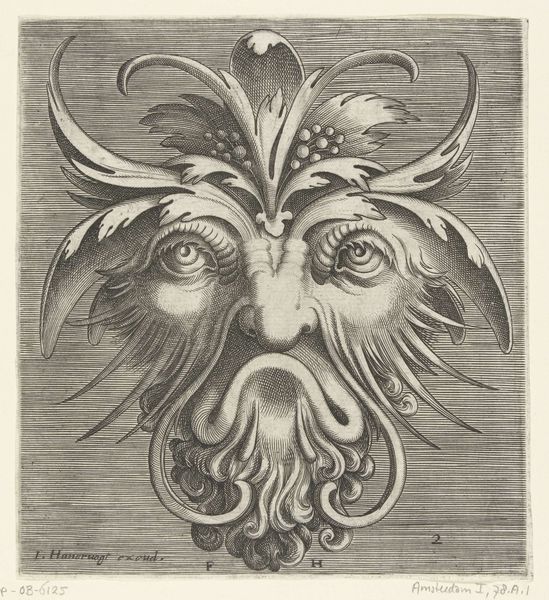
drawing, print, etching
#
drawing
#
baroque
# print
#
etching
#
figuration
Copyright: Public Domain
Curator: What a delightfully grotesque fellow. Editor: Yes, there's an intensity to this print that is immediately arresting. Stefano della Bella's "Mask," dating from the period 1610 to 1664, conjures the kind of ritual imagery you might find at the edges of consciousness. Look at the eyes and twisted beard. Curator: Absolutely. The eyes command immediate attention—they bulge and swirl with an inner life. There’s something deeply unsettling, yet also playful, about the imagery. Is this some form of woodland spirit? The horns imply something ancient. Editor: I am also thinking about process here. Etching is about line and controlled corrosion on metal, translating depth and volume with such spare means. What acid would have touched that copperplate and, who might have labored over these small prints, perhaps for distribution in popular festivals? The whole aesthetic of the Baroque was designed around mass dissemination. Curator: Very interesting indeed. These masks likely resonated with certain pagan figures of old; a god like Pan comes to mind, especially given the wild quality of his eyes and hair. This blending of fear and frivolity in the imagery reflects Baroque sensibility to me. Editor: How far are we, really, from contemporary printmaking and mass art? Della Bella was very keen on courtly scenes too and I'd want to see more of his overall output, thinking in particular about that period’s labor and art market contexts. Curator: That's the key: understanding how symbols evolve. The "Mask" doesn’t just frighten; it sparks an understanding. I'm thinking about masks, carnivals, rituals, all of this, is perhaps still with us today, transformed but recognizable. Editor: Looking closely, seeing the means of production, invites that bridge, as well, showing these figures have always required labor and been situated squarely inside of economic constraints. This is another mode of immortality—of cultural memory if you prefer it—but also, and maybe above all else, materiality.
Comments
No comments
Be the first to comment and join the conversation on the ultimate creative platform.
